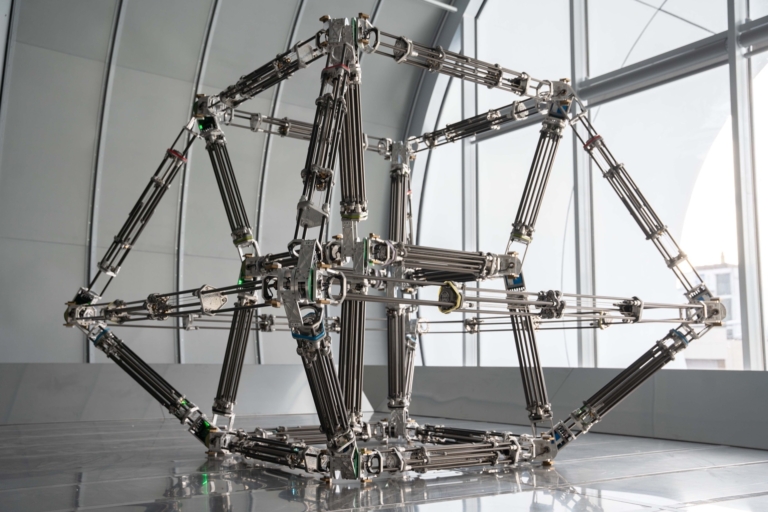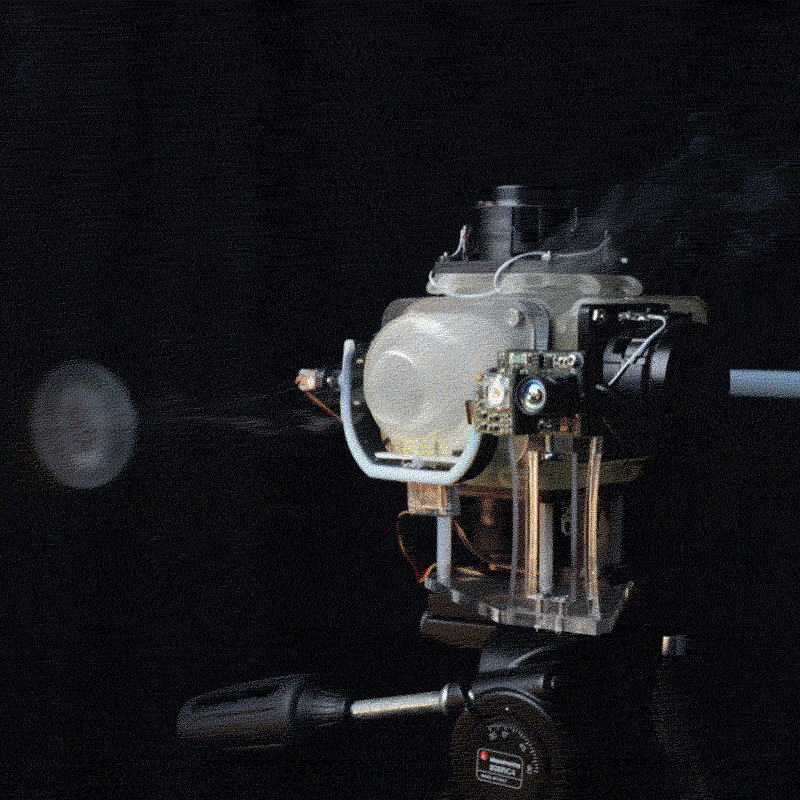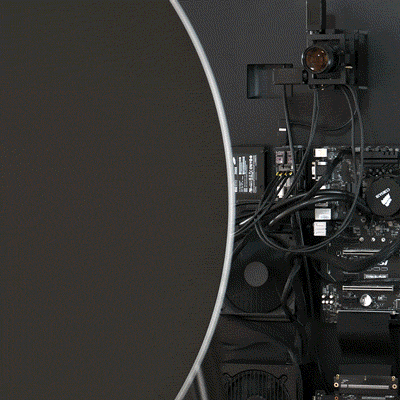The Air Quality Sensor is a beautiful home object that helps you discover how air quality affects your environment. Please support this project on Kickstarter!
Why do we need an air quality sensor at home?
Air is an invisible life support system that we mostly take for granted, but in reality modern life exposes us to many sources of pollution. According to health and government agencies, air pollution is linked to a number of symptoms like difficulty breathing, heart attacks, aggravated asthma, just to mention a few. Recent research is linking air pollution with long term compounding effects like premature death in people with heart or lung disease and cardiovascular problems. However, with deeper insights into the air we breathe, we can mitigate the detrimental impacts of air pollution by taking effective measures – sometimes just as straightforward as opening a window or turning on an air purifier. This is why we built the Air Quality Sensor by studio LUFF, a beautiful home object that helps you discover how air quality is affecting your environment.

My story with air pollution began when I moved to the west coast of the United States. As I learned more about the surrounding environment, I became increasingly interested in the problem of air pollution. As a designer and technologist, I approached the topic by purchasing air quality modules and positioning them in my living room. I started noticing how air quality was affecting headaches and sore throats. The pivotal event that pushed me to create a sensor people could use beyond just my living room happened during the wildfires of 2020, when extremely unhealthy air levels made hunting for spaces with good air quality a necessity. This increased awareness made me more conscious about when to open windows or when to start an air purifier.
That is why I started working to spread these insights and develop a sensor that can live in many more homes. Some of the early prototypes look like a bundle of cables, and those were really the early prototypes. The first attempt to make an air quality sensor that could be actually fit in a living room was called AIRES, and was done in collaboration with Zaza Zuilhof.

After AIRES, we went back to the drawing board with the help of some friends, and we started to redesign the sensor completely, based on our learning and the desire to make this product accessible to many more people. We also wanted to create something that embodied the values that we want to see in technology; not only making a device that is better, but also a device that explores how we can create technology that is desirable, long lasting and transparent.

Quiet technology
The Air Quality Sensor by studio LUFF embodies the concept of “quiet technology” — technology that seamlessly integrates into our living spaces without demanding constant attention or disrupting our daily lives. It provides an informative and visually appealing way to monitor the air in the home without relying on obtrusive screens. The LED dial, reflected on the wall, displays the current air quality level through a circular visualization based on the AQI (Air Quality Index) scale. The pattern on the sensor itself evokes the idea of suspended particulate matter, reminding us of the invisible particles we’re measuring. This graphic was crafted with programmatic coding practices, mostly in Processing.


Interaction with the sensor is equally unobtrusive. A simple tap on the center button reveals the current air quality reading, while a gentle animation notifies you if levels rise above moderate on the AQI scale. There are no loud notifications. Purposefully the Air Quality Sensor is a diagnostic tool and not an oracle, providing data and insights that allow you to take action and investigate the cause.

Minimize Materials
I’ve always been fascinated by constraints and getting the most out of minimal material and energy use. In a world dominated by headlines pointing to the climate crisis and its consequences, the best approach to creating anything is to minimize the input of materials needed. For that reason, we diverted away from our initial prototypes that would have required a case (most probably made out of plastic), and instead opted for a design using only a printed circuit board and a sensor module. This approach makes the highly accurate PMS 7003 sensor module accessible to a wider audience at a price point that is hard to find in other commercial products. As you can read in this article from Nature, studies confirm the PMS 7003’s reliability as one of the best sensor modules for accurate reading of air pollution over time.
Strive for Longevity
Another point of reflection is the increasing reliance of hardware products on cloud services. Some hardware products are only the “front end” of cloud services, and when the cloud service stops working, the hardware product loses a lot of its functionalities or stops working altogether. The philosophy behind the Air Quality Sensor by studio LUFF is “local first.” This approach ensures that the device’s functionalities are resilient and future-proof, prioritizing local data storage and offline capabilities over reliance on cloud services. Without an internet connection, the sensor will continue to operate, storing air quality data locally on the onboard SD card; a safeguard for privacy and longevity. Moreover, a web interface accessible directly from the sensor over the local WiFi network allows access to historical air quality and real time data, without the need for external servers. With its open hardware architecture, our sensor can also be easily repaired. In fact swapping a malfunctioning sensor module is pretty effortless, and it allows for easy debugging and replacement of components, if they would ever stop working in the future.
Cultivate Understanding
The device, by nature of its minimalism, is intelligible. The components on the back of the sensor are easily accessible and visible to an end-user who is interested in customizing their hardware. Another aspect, that depends on shying away from cloud computing, is that by not relying on servers the software is all self contained. This means that it is easier to have a full picture of the functioning of the sensor. An additional benefit is much lower power consumption. First of all the use of embedded software written primarily in C and C++ is more efficient than a web-based software stack.

The concept of the cloud makes computing immaterial, yet, the data centers that power everything we consume online account for large electricity usage, they occupy land, use a lot of water, they have a large carbon footprint and generate a lot of e-waste. We didn’t want to adhere to any of these dynamics, so we designed the air quality sensor, as explained before, to be able to store the historical data locally, on the on-board SD card, and serve the data over the local network on its own web page; we also share the code with users, for their understanding.
Inspire tinkering
The software architecture that we conceived allows customization at many different levels. The webpage that is served over the local network is stored on the SD card and can be easily customized and improved. The behavior of the device can be personalized even further by changing the code on the microcontroller that powers the device’s intelligence. Using an ESP32-S3, new software can be uploaded by connecting to a laptop and uploading the code with Arduino.

The Air Quality Sensor by studio LUFF is a passion project that embodies a lot of the principles that we would like to see in technological products. By adhering to the principles of striving for longevity, cultivating understanding, minimizing materials and inspiring tinkering, our device tries to show a different approach to building things. Through its thoughtful design and localized data storage, the Air Quality Sensor empowers individuals to take control of the invisible factors impacting their health and well-being. It serves as an example that well designed technology can be beautiful yet last long, insightful yet customizable, but most importantly this project wants to be a catalyst for starting a wider conversation about how we can create better products.
Project Page | Pierluigi Dalla Rosa | Back this project on Kickstarter









